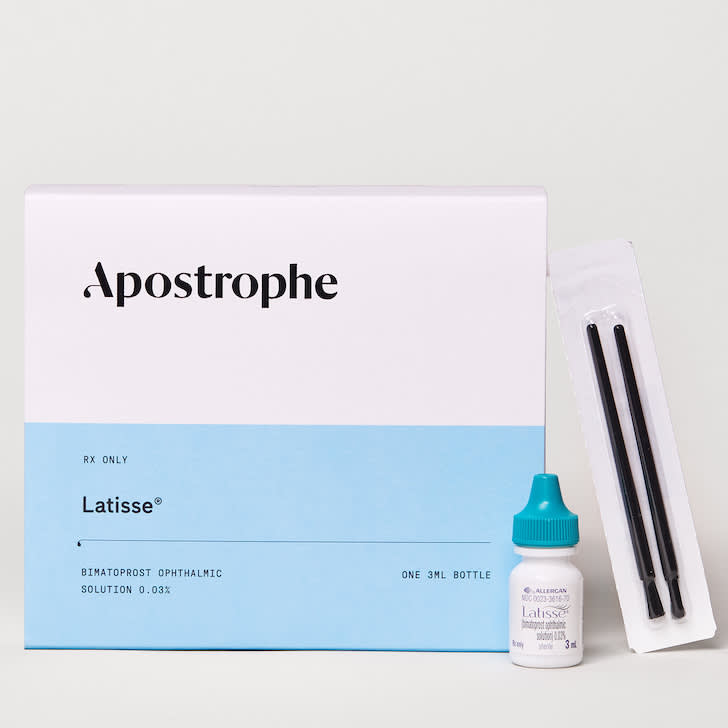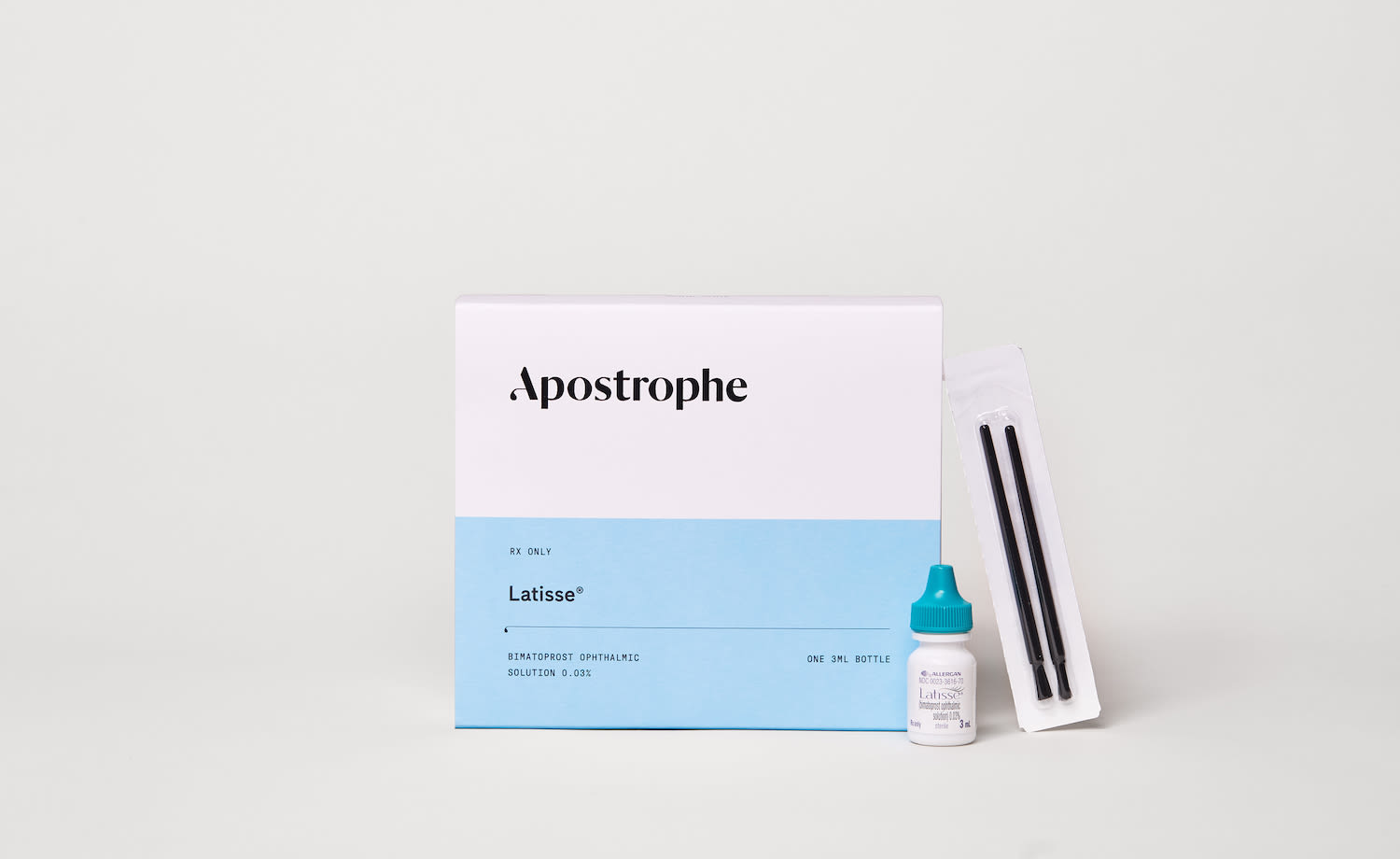General
Latisse®: what you need to know


SHARE
General
Latisse®: what you need to know
Medically reviewed by Aimee Paik, MD
Written by Apostrophe Team
Last updated 7/5/2022
Latisse is the only FDA approved, prescription strength treatment for growing longer, fuller and darker eyelashes. These lashes are ones you grow yourself – that means no glue, no salon appointments, and no worries about losing them in the pool. Here’s what you need to know.
How does Latisse work?
Bimatoprost ophthalmic solution 0.03% (Latisse) has been proven to make lashes longer, fuller, and darker. Each hair follicle undergoes a cycle of growth, transition, and rest before falling out to make room for a new hair follicle in its place. The amount of time a hair follicle spends in the growth phase determines how long the hair can grow. Latisse works by extending the growth phase of your eyelashes. Longer growth phase = longer lash!
Normal eyelash growth cycle
The anagen, or growth phase, of eyelashes typically lasts about 1-2 months. The catagen, or transition phase, lasts about 15 days. The final telogen, or resting phase, lasts about 3-9 months. The hair then falls out and a new hair follicle grows in its place. Hair follicles exist in various phases of this cycle which is why your lashes don’t all fall out at once!
Pigmentation also only occurs during the growth phase. This means lashes that remain in the growth phase for an extended period of time are darker as well as longer. Finally, Latisse can stimulate fine vellus hairs to become thicker dark terminal hairs, resulting in a fuller looking lash line.
What are the side effects of Latisse?
The most frequently reported adverse reactions were:
Eye itching, redness, and irritation.
Dry eye symptoms.
Eyelid skin darkening and redness – this will increase as long as the product is used. This may be reversible after stopping Latisse.
These reactions occurred in less than 4% of patients.
Since Latisse can stimulate hair growth in a nonspecific manner, you should avoid applying the medication onto adjacent skin.
Additionally, iris darkening may occur and is likely to be permanent. In a pooled safety analysis of patients using Latisse for eyelash growth, iris pigmentation was noted to occur in 2 of 680 patients (0.3%). In this study, however, the effect appeared to be reversible in 1 of the 2 patients. In glaucoma patients who apply the medication directly onto the eye itself, iris pigmentation occurs in 0.9-1.5% of patients.
Finally, loss of fat in the area around the eye (periorbital fat atrophy) was reported in 1 of 680 Latisse patients (0.15%) in a pooled safety analysis. This caused a deepening/hollowing of the eyelid crease. This side effect occurs more commonly in glaucoma patients who apply the medication directly onto the eye itself.
You should not use Latisse if:
You have intraocular inflammation (e.g., uveitis).
You have known risk factors for macular edema (such as an absent or torn lens of the eye).
If you are allergic to Latisse or to benzalkonium.
It should be used with caution in pregnant and lactating patients.
You should stop Latisse if:
You develop a new ocular condition (e.g., trauma or infection).
You experience a sudden decrease in visual acuity.
You have ocular surgery.
You develop any intolerable eye symptoms.
Overall, Latisse is a safe and effective medication to use for those looking for thicker and longer natural lashes. You’re armed with the knowledge to make the right decision for you and your lashes! If you think this is the right treatment for you, you can get Latisse online from a dermatology provider at Apostrophe.
1. Prescribing Information: Latisse (bimatoprost ophthalmic solution). July 2017. https://www.allergan.com/assets/pdf/latisse_pi.pdf
Like what you just read? Sign up for our email list to get the scoop on skincare science delivered straight to your inbox.

Education
What is milia?
What is milia? Today, we’re jumping into one type of bump that you may have heard about most commonly in infants — milia.
Read More
Education
Best moisturizer for acne-prone skin
If you have combination acne-prone skin, figuring out which moisturizer is best for your skin might be tough. In this guide, we break down the best moisturizer for combination, acne-prone skin.
Read More
Education
How to build a face care routine
As you get into skincare, it might seem overwhelming, especially trying to figure out the order you're supposed to apply products in. Below, we detail how to build a face care routine for your skin!
Read More